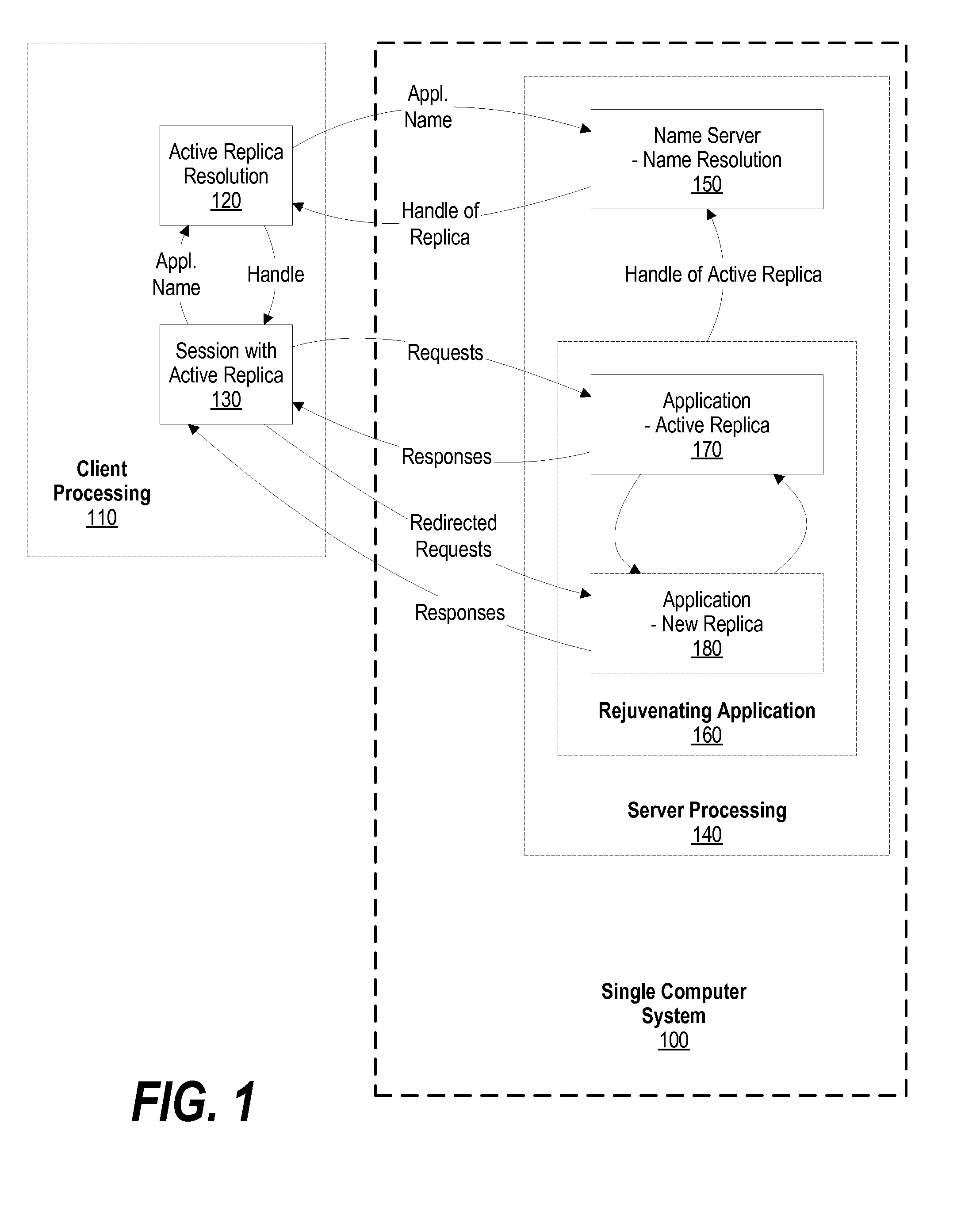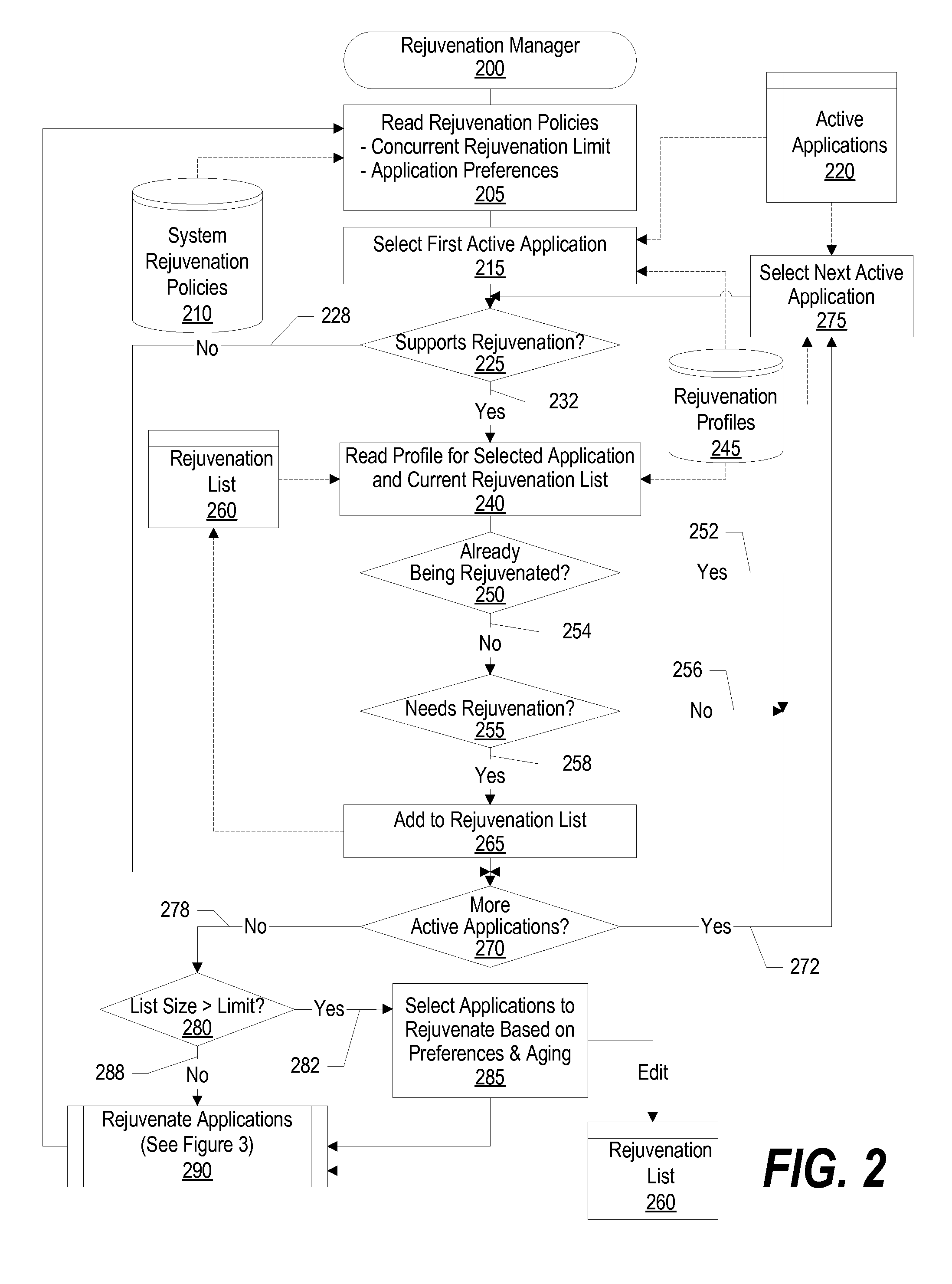Minimizing Software Downtime Associated with Software Rejuvenation in a Single Computer System
a technology of software rejuvenation and computer system, applied in the field of system and method for software rejuvenation, can solve problems such as application failure, increased response time, and performance degradation
- Summary
- Abstract
- Description
- Claims
- Application Information
AI Technical Summary
Benefits of technology
Problems solved by technology
Method used
Image
Examples
Embodiment Construction
[0025]The following is intended to provide a detailed description of an example of the invention and should not be taken to be limiting of the invention itself. Rather, any number of variations may fall within the scope of the invention, which is defined in the claims following the description.
[0026]FIG. 1 is a high level diagram showing components used to rejuvenate an application on a single computer system. Computer system 100 is a single computer system. While computer system 100 may interoperate (i.e., via a network) with other computer systems, the rejuvenation processing takes place within a single computer system. Computer system 100 includes server processing 140 which include one or more rejuvenating applications 160 and name server 150. Rejuvenating application 160 includes active replica 170 and new replica 180. Active replica 170 is the instance of the application that processes client requests and returns responses to the client. As active replica 170 ages its performa...
PUM
 Login to View More
Login to View More Abstract
Description
Claims
Application Information
 Login to View More
Login to View More - R&D
- Intellectual Property
- Life Sciences
- Materials
- Tech Scout
- Unparalleled Data Quality
- Higher Quality Content
- 60% Fewer Hallucinations
Browse by: Latest US Patents, China's latest patents, Technical Efficacy Thesaurus, Application Domain, Technology Topic, Popular Technical Reports.
© 2025 PatSnap. All rights reserved.Legal|Privacy policy|Modern Slavery Act Transparency Statement|Sitemap|About US| Contact US: help@patsnap.com



